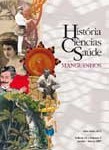This analysis of Rudolf Barth’s accounts of Trindade Island, rich in information and collected data, shows how valuable his work was for the isle’s history. It also underscores the import of his observations on the environmental imbalance encountered there in the 1950s and highlights proposed solutions for the serious problems detected. For the authors of this study, Regina Horta Duarte, of the History Department of the Universidade Federal de Minas Gerais, and Güydo Campos Machado Marques Horta, undergraduate in Biology of the Pontifícia Universidade Católica de Minas Gerais, “Barth’s accounts reveals a protectionist sensitivity rare in post-World War II Brazil.”
While specialists devoted to studying the island are familiar with and rely on Barth’s reports, there had previously been no specific analytical work on this material. The authors situate two scientific expeditions to Trindade within a broader historical narrative of the island. Barth took part in both endeavors, in 1957 and 1959, as part of the activities organized by the Brazilian government to commemorate International Geophysical Year (IGY), a United Nations initiative.
To paint an environmental history of Trindade Island, the authors rely not only on these accounts but on a variety of historical sources as well: historical maps, IGY documents, and reports of prior scientific expeditions to the island. In keeping with the interdisciplinary approach indispensible to environmental history, Duarte and Horta use the extensive existing bibliography on the island, produced by geographers and biologists.
The history of Trindade Island – a place unknown to a good share of the Brazilian public, although it has been part of the country’s territory since discovery – includes turbulent disputes over its control by Brazil and England, episodes of shipwrecks, and forays by pirates in search of legendary treasure. The island witnessed the acclimation of domestic animals, starting in the eighteenth century, and also the extinction of original plantlife and the endangerment of native species. In the nineteenth century, a visionary gentleman in the United States projected on the island his dreams for the creation of a utopian kingdom. Since the 1950s, the work of various Brazilian scientists and of the Brazilian Navy has been paving the way for the island’s environmental recovery.






